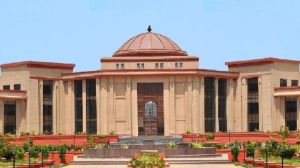Chandrayaan-1 launch on Oct 22
Come November 8, India’s space programme could have its first ever date with the moon.

Come November 8, India’s space programme could have its first ever date with the moon.
Five years after the Government cleared the project, ISRO announced on Thursday that it is all set to launch the country’s first unmanned mission to the moon and unveiled the spacecraft — Chandrayaan-1, fully loaded with its six Indian and five foreign scientific instruments— at its satellite centre.
The spacecraft is scheduled for launch on October 22 with a window fixed between October 19 and October 28. It will make an entry into the lunar atmosphere for a two-year mission. The window is, however, subject to Chandrayaan-1 clearing the vibration and acoustic tolerance tests over the next week before it is shipped to Sriharikota for integration with its launch vehicle the PSLV-XL. “The flesh and bone is ready,” said ISRO moon mission director M Annadurai. It has cleared a major hurdle in the form of extreme temperature tests (thermo vacuum test) over the past fortnight. Now its launch is dependent on weather factors, said Annadurai.
“Weather is a key issue. We are watching for forecasts closer to the tentative launch dates. On the east coast there are worries over weather at this time of the year,” Annadurai added. Chandrayaan-1 would take approximately eight days to course the nearly 3,86,000 km to get to its final orbit — 100 km from the moon.
If weather plays spoilsport and the late October launch is postponed we would have to wait for dates in November or December when the trajectories of the moon and Chandrayaan-1 will intersect again. “A launch date is not finalised. Every month we have two opportunities that will enable the spacecraft to travel a minimum distance and save on fuel,” said director of ISRO Satellite Centre T K Alex.
Listed among the 12 highly-anticipated science and technology breakthroughs of the world, the mission would mark a global return to the moon. Chandrayaan-1 follows recent missions to the moon from Japan and China. Its launch would be followed by renewed US and Russian missions. India is working on an advanced Chandrayaan-2 mission in collaboration with Russia.
According to ISRO officials, the prime aim will be to search for helium 3 — a key to deriving energy supplies through nuclear fusion technologies. “Countries returning to study the moon have research interests in the nuclear fusion area,” officials said.



- 01
- 02
- 03
- 04
- 05




























